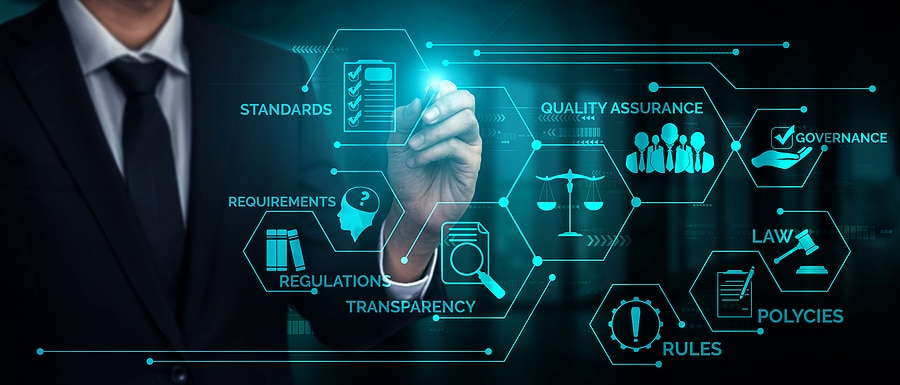NIST Compliance: Upholding Security Best Practices in Your Organization

NIST Compliance: Upholding Security Best Practices in Your Organization
The National Institute of Standard and Technology (NIST) is a division in the U.S. Dept. of Commerce. Its main purpose is to define, regulate, and enforce standards in relation to technology. Security is one of NIST’s main objectives, so compliance with its standards is extremely important.
NIST compliance means that your company is properly adhering to the stipulations of one or more of NIST’s publications.
Benefits of Complying with NIST
Before we discuss how to best uphold the practices NIST compliance requires, let’s first take a look at the various benefits of compliance. If you comply, your business will be significantly safer from malware, cyberattacks, off-network data breaches, and other nefarious tricks cybercriminals attempt.
Complying with NIST ensures that both your data and your network are as secure and well maintained as possible. Just by making sure your business complies, you’re increasing your company’s data security.
Another benefit of complying with NIST is the opportunity to obtain new customers and potential government contracts. Many companies look for NIST standards when working with vendors, and to do any business with the federal or state government, you must be NIST compliant. Thoroughly following compliance guidelines doesn’t only protect your business; it opens new doors for it too.
Tips For Guaranteeing NIST Compliance
There are several steps you can take to comply with NIST guidance:
Make a Plan
The key pillars of NIST are Identify, Detect, Protect, Respond, and Recover. To make sure you’re touching on every point, develop a risk assessment plan. Your risk assessment plan should include each of the five pillars in some way.
If you don’t know where to begin or just would prefer information straight from the source, review the NIST 800-53 publication. It contains complete guidance on creating a well-thought-out risk assessment plan so you can be certain you do it right.
Don’t Forget to Audit
In order to be NIST compliant, you must make and preserve auditing records. It is a strict requirement for businesses to be able to track and identify the actions of every system user.
Audits performed by an unbiased, third-party is the best option, with some NIST publications requiring third-party auditing. Being accountable is one of the most repeated factors of NIST compliance. Even when your organization is not being reviewed, you must be aware of everything going on in your business.
Perform Regular Maintenance
Any machine or system can break down if it isn’t being properly maintained, and the systems your business uses are no different. It is easier to catch small gaps in compliance when someone is regularly looking for them.
Business owners and upper management should empower their selected employees to maintain systems by providing them with the best training, equipment, and tools they have.
Encrypt User Data
If your company hasn’t encrypted all of its sensitive data, right now is the perfect time to start. When combined with other cybersecurity measures, encrypting data makes your assets almost impenetrable for cybercriminals.
The digital world we live in evolves more rapidly every day. Modern businesses have to rely heavily on cybersecurity to protect their assets. NIST compliance is one of the best ways to ensure businesses are protected from potentially devastating cybersecurity attacks.
Data Sanitization
Data sanitization refers to a process that renders access infeasible to target data on media like hard drives, solid state drives, and other data bearing media. NIST’s Guidelines for Media Sanitization SP 800-88 Revision 1 provides guidance to assist organizations and system owners in making practical sanitization decisions based on the categorization of confidentiality of their information.
These guidelines are the currently recognized standard for data erasure compliance. The current revision was issued in 2012, and includes overwriting, secure erasure, and physical destruction methods. The NIST guidelines have replaced the DoD standard in regulatory and certification compliance across all industries.
SEAM Services
In North Dakota and South Dakota, SEAM Services is the go-to company for comlpiant data wiping, data destruction, and electronics recycling or resale. SEAM also offers data security compliance education and support for businesses in heavily regulated industries like healthcare, finance and education. Contact us today to learn more!
SEAM provides IT recycling and data destruction services including onsite shredding and hard drive wiping to South Dakota, North Dakota, Minnesota, Iowa, and Nebraska.
Schedule a pickup or contact us for more information.





